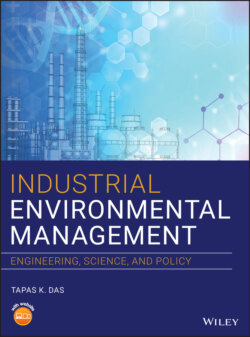Читать книгу Industrial Environmental Management - Tapas K. Das - Страница 11
Preface
ОглавлениеRecently, I taught a similar course titled “Industrial Environmental Management” to senior engineering students and found out that there isn't a single textbook available to cover the depth and breadth of this subject matter. That alone motivated me to write this textbook with real‐world examples, challenging problems, and solutions provided for each chapter.
Tomorrow's and today's sustainable products and processes require engineers to carefully consider environmental, economic, social factors, while using sustainable feedstocks, renewable energy, water, chemicals, and materials in creating their design. Some quantitative tools for incorporating sustainability concepts into engineering designs and performing metrics are highlighted in the text; sustainable engineering and its principles introduce these tools and show how to apply them in lean manufacturing. In general, engineers and managers working in manufacturing industries find valuable and up‐to‐date information about lean manufacturing, Six Sigma, workers' health and safety issues and environmental regulations, monitoring, reporting, and compliance. Also, consulting engineers will find useful information about sustainable design principles and methodology, plus best available control technologies for environmental remediation in cost‐effective ways.
This book is dedicated to undergraduate and graduate students. This book is designed to be a textbook that is prepared primarily for junior‐level and senior‐level students in multidisciplinary engineering fields including, but not limited to, aerospace, chemical, civil, environmental, industrial and manufacturing, materials science and engineering, mechanical, paper science and engineering, petroleum engineering, and business management. The subject matters covered in this textbook will be suitable for offering a course in multiple engineering disciplines within colleges and schools of engineering programs. This book has 10 chapters. I have written the text for Chapters 1 through 8 for students in clear and simple language. Theories, real‐world problems, and applications are embedded throughout these first eight chapters so that students can check their understanding before continuing on to new sections. Chapters 9 and 10 are more suitable for a graduate‐level course in sustainable engineering, sustainable manufacturing, or related topics.
4 June 2019
Tapas K. Das
Olympia, WA, USA
